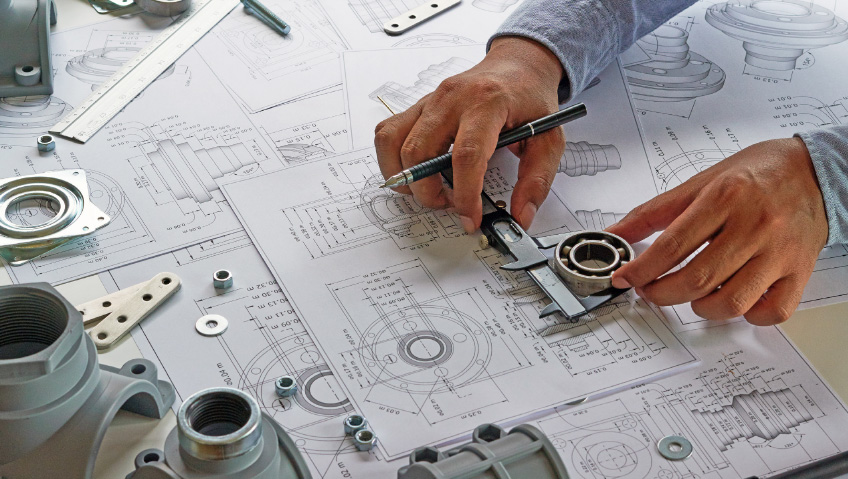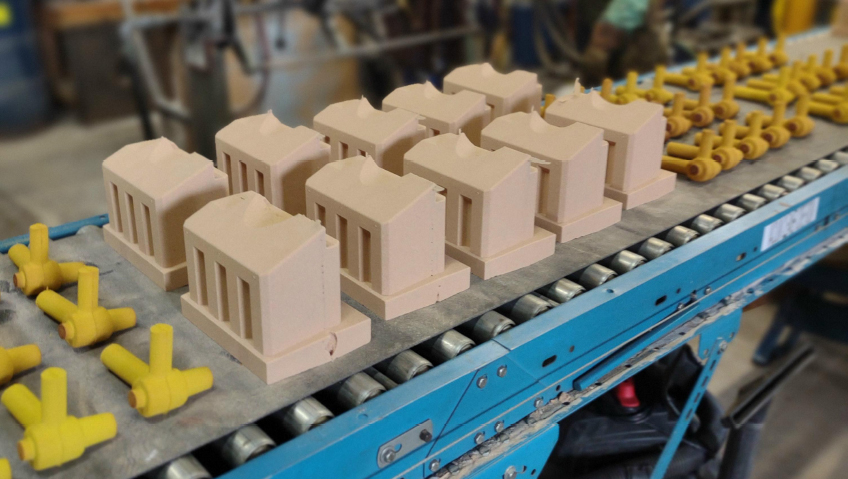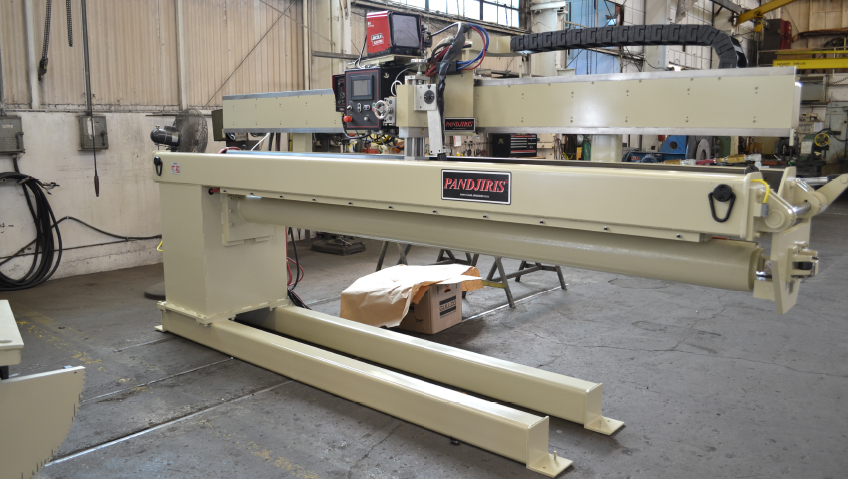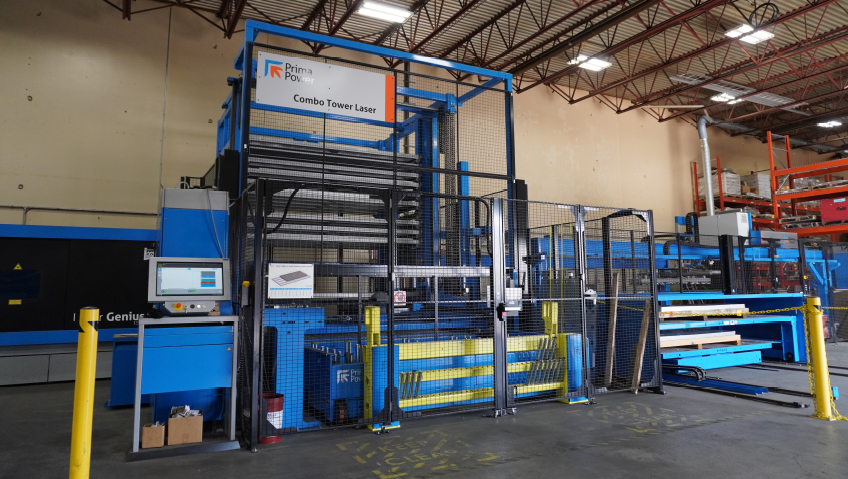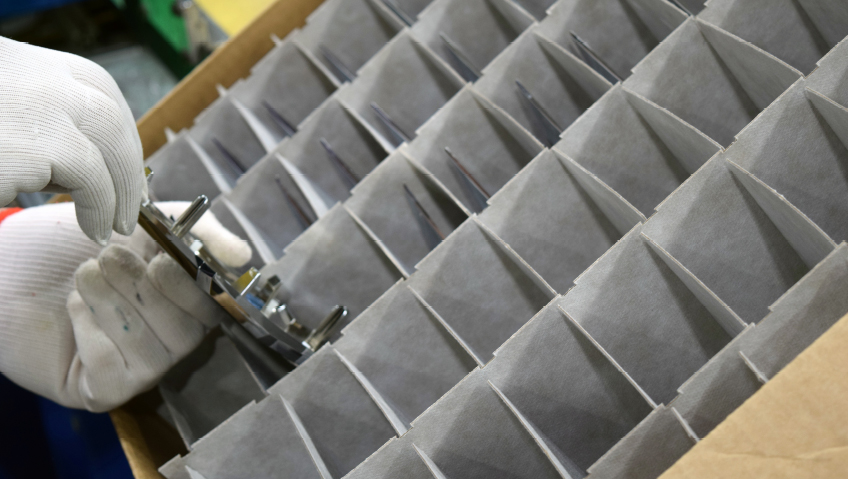The leading manufacturer of thick wall polyethylene components for natural gas distribution systems, Automation Plastics Corporation specializes in the custom molding of thermoplastic injection molded products for a wide range of commercial and industrial customers.
With 40 horizontal injection presses in operation ranging in size from seven to 500 tons, and more than 100 employees, the company focuses on new equipment, technology, and procedures.
Along with that comes exemplary customer care and leadership training.
Standing out from competitors is easy when a company has considerable experience machining molded parts and can offer design features such as machined precision threads, flash-free O-ring grooves, and smooth sealing surfaces.
Commonly running short cycle molding (less than four seconds) and high cavitation molds (up to 128 cavities) for consumer packaging applications, Automation Plastics also features in-house tooling maintenance and repair, providing clients with improved reliability in output and shorter lead times.
Steeped in innovation
Much of the success of this innovation is owed to former owner and founder Henry DeRocher who shaped the vision that the company still embraces today, says President Harry Smith.
DeRocher, who started the company in 1980, sold it in 1999 and officially retired in 2004. He was 59 when he founded Automation Plastics. Educated at Carnegie Tech, he got into the nylon molding business in 1953, where, surprisingly, his years of experience as a metallurgist laid the foundation for great things to come.
“He started from scratch in a green field, but he was very accomplished at mold design for the high cavitation precision tooling used for packaging,” says Smith. “One of his early successes even before Automation Plastics was a nylon nail he did for General Motors in the 1960s. People had a difficult time trying to figure out how to make that part, and once he proved he could do it he was inundated with orders from General Motors.”
DeRocher’s vision for Automation Plastics was, at the time, centered around parts for improved bowl feeding, Smith says. Bowl feeding is typically something used in high-volume assembly vibratory bowl feeding, and so the implication there is at its highest volume.
“We’ve seen over the years that assembly speeds have approached 900 a minute, so cam-driven assembly machines today are putting assemblies together extremely fast,” Smith says. “We make more than two billion parts used for aerosol and pump packaging. With aerosol implication there is a tiny orifice and we’ve gone down now to as low as 6,000 which is extraordinary in high volume.”
The company’s appetite for innovation seems to thrive in direct proportion to its success. Currently, it’s in the midst of some R&D in the realm of vision inspection which promises to result in an even better quality of production, especially where high-volume tiny openings are involved.
“We like that,” Smith says. “To be successful in that kind of work in mold design and maintenance is critical. And that plays back to the foundation that Henry gave this company.”
Setting the tone
In the early days of the 80s, DeRocher had some tools transferred over to his company, which were designed and built even earlier, and designed in such a way that they would run for years.
Henry was a metallurgist by training, so he designed molds to last for millions of cycles, says Smith, adding the company recently retired a mold that had more than 40 million cycles.
“That mold at the time was 128 cavities. We replaced it with a 96-cavity mold, but we significantly decreased the cycle time. So we actually gained productivity,” Smith says. “It’s not very often that you can get a second kick at the can, but when you end a long product life-type scenario those opportunities do come up.”
DeRocher gave Automation Plastics a good start in several areas, including one component that was doing 128 cavities. They redesigned it, and after 20-some years of evolving ways to apply the technology to other parts, they’ve got to where they’re running four seconds in high cavitation, doing parts with a tiny orifice and some intricate part features.
“The mold design has been interesting, and so has the mold making,” Smith says, referring to their machinery, which includes a Dysinger and a Makino.
“The wire machine is made by Makino. It’s a top-of-the-line, world-class wire machine. I’m proud to own a Makino. We had that machine retrofitted with some 4,000th wire so we could do a 4,000th type radius work, some of the finest work we’ve done, to get some of these intricate part features.”
Precision over and over
Automation Plastics has many sophisticated capabilities, including injection molding, precision plastics machining, automation and assembly, tooling and maintenance, and design and engineering.
When it comes to choosing the correct prototyping method, the company provides prototype parts that are machined, molded, or have undergone any of the different additive process technologies available through its in-house capacity or multiple outside sources.
Automation Plastics’ mold engineering team manages even the smallest repairs and successful reclaim strategies.
But they come by their talent and success honestly – design and mold making was ‘kind of in Henry’s DNA,’ Smith says. DeRocher’s influence is deep and long-lasting, and he’s had a big impact on the company all the way through: Automation Plastic’s current tool room manager Paul Layton actually worked for DeRocher as a toolmaker in the 90s, and the primary mold engineer also studied under Henry in the 90s.
“We’ve had some people – you could call them second-generation Henrys if you will – who carry his vision forward,” Smith says. “He still has his fingerprints here. Henry started something and it’s grown to 125 people now.”
Growth upon growth
Even more growth is on its way. The 2022 new facility expansion is happening now but goes back to a facility closure by one of the company’s customers in 2020 when the company made some significant purchases including eight new angle machines along with another six used machines bought that year.
“We’re still in growth mode with that product line and that particular customer,” says Smith. “I don’t have hard data but it seems to be that the reshoring of manufacturing is putting a lot of pressure on the capacity in this country. I can’t say my crystal ball is particularly clear, but I’ve already purchased the machines. I’m in the midst of buying a building. We’re renting some space right now, and what we’d like to do is follow through on the investment.”
This existing facility right next to the current Automation Plastics facility is a big part of the company’s expansion plan for 2022.
“We expect at least another 60 jobs over the next few years,” Smith says. “It’s exciting!”
Of course, while growth is welcome news for any business, it’s not always easy to navigate. “We grew 38 percent in 2021, and that brought a lot of challenges in bringing new people and training, and that continues to be a challenge,” Smith says. “The crystal ball’s a little fuzzy about the growth opportunities in front of us, and I think we have as much on our plate as we can handle at this stage.”
But it’s a good problem to have, he adds. With significant growth usually comes significant increase in infrastructure and staffing, which is always a bit of a juggling act, and one that Smith enjoys undertaking, particularly when it comes to leadership and employees.
“I like to hire character,” he says. “People who bring a certain skill set. We’ve added some positions of some good people and we’re still trying to grow into that. In some ways, growth can be a challenge financially and organizationally.”
Radical leadership
This segues into the company’s commitment to promoting and maintaining radical leadership. One of the employees Smith has hired was a coach with experience in radical leadership training, and the company has another employee on staff who has been helping to provide that training.
“What does radical leadership mean? The woman who founded the program, Therese Kienast, is also in the coaching business and she defines a radical leader as fully aware and awake to what is, while completely responsible, with a choice of creating what she or he wants.”
This is a notion Automation Plastics has taken to heart in all areas of its production. “We try to teach some tools that help people lean into what matters to them as well as others with an emphasis on accomplishing what we want to accomplish through relationship with others,” says Smith. “Keeping relationships healthy and being aware of those things that can happen throughout the day, taking us in a different direction that isn’t aligned with what we truly want.”
For Automation Plastics – perhaps even for Henry DeRocher himself – it’s really about aligning the people in the organization with a mindset that honors who other people are and honors what they’re creating for themselves.
“It’s something we feel is important,” Smith says. “It’s not only about work, it’s about relationships.”

